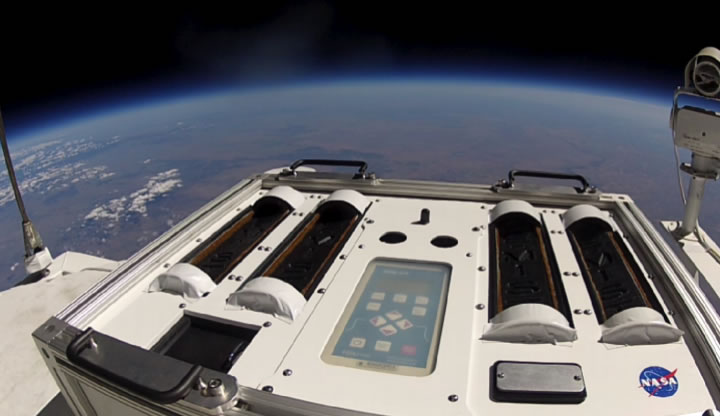 |
|
|
Fall 2015 Alumni Spotlight: David Smith
The pristine Mars environment remains vulnerable to biological contamination and the likelihood of false positives associated with life detection missions (robotic or human) increases without a deeper understanding of which terrestrial microorganisms are most capable of survival, persistence, or growth once delivered to the Red Planet. Earth's stratosphere (from about 20-35 km above sea level) mimics the surface pressure on Mars, with cold and dry extremes, elevated levels of ionizing and non-ionizing radiation, and also the presence of oxidizing chemical species. We do not know how combined extremes in the martian environment impact the survival and response of terrestrial microbes because we do not have the luxury of sample return and no single Earth laboratory chamber can simultaneously produce the full suite of Mars surface parameters; however, microorganisms sent to the Earth's stratosphere (which naturally provides a similar combination of extreme Mars-like conditions) can be analyzed using the most sensitive molecular tools available. Exposing Microorganisms in the Stratosphere (E-MIST) is new NASA balloon payload that was built to enable such experiments and is led by Smith. It is an autonomous hardware system that mounts to the exterior of scientific balloon gondolas, with four independent sample holders for exposing pre-loaded microbiological samples to the stratosphere which can then be returned to the ground for analysis. As Principal Investigator for E-MIST, Smith works with a talented team of scientists and engineers at NASA Kennedy Space Center, Ames Research Center, and Wallops Flight Facility, to perform these experiments. Their most recent test flight with the NASA Balloon Program launched from Ft. Sumner, New Mexico, in September 2015.
Above: The E-MIST hardware in the closed position During the launch, the balloon ascended to 120,000 ft for a long duration float through Earth’s stratosphere. Bacteria on board the balloon craft are held in closed containers that can be opened for specified intervals of time to expose them to the ambient environment. The bacteria on board were exposed to the air intervals of six, 12, 18, and 24 hours. The return to Earth, an explosive charge detonates, tearing the balloon, and the instrument payload parachutes back to the ground. The results of this experiment are still being processed, but Smith expects many could survive! Previously, at UW, he studied the survival of terrestrial microbes found floating and surviving hundreds of thousands of feet in the air! Smith believes the upper atmosphere may be one of the least explored places on Earth.
Above: Spores of Bacillus pumilus on the E-MIST hardware
|
|
 UWAB Alum David Smith (2012, biology and astrobiology), now at NASA Ames Research Center, studies how microorganisms can survive at the edge of space.
UWAB Alum David Smith (2012, biology and astrobiology), now at NASA Ames Research Center, studies how microorganisms can survive at the edge of space. 

